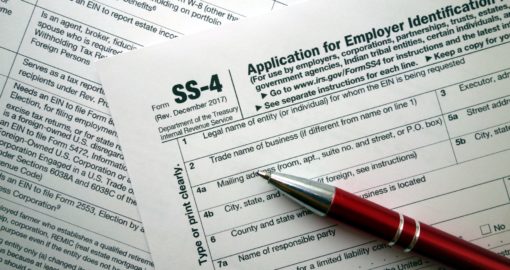Call Us Today (877) 943-0100
TIN Matching To Reduce B Notices: How A TIN Matching Program Can Save You Money
TIN Matching + W-9 Verification | April 1, 2021
Whether you manage your organization’s accounts payable department or contractor recruitment, you should care about Tax Identification Number (TIN) Matching. Here is how TIN Matching to reduce B Notices can save your company money, and how we can help.
To understand why you need TIN Matching to reduce B Notices, you should know what a “B” Backup Withholding Notice is, what steps must be taken when you receive one, and how putting a TIN Matching program into place can streamline what, otherwise, is a time-consuming process. Keep reading to learn more.
What is a “B” Notice?
When you decide to hire and provide work or services to an independent contractor, you must collect basic information such as the contractor’s business name and Tax Identification Number (TIN) to pay them for their services or work. This information is usually obtained by asking the contractor to fill out a Form W-9. Then you must report that payment to the Internal Revenue Service (IRS) via a Form 1099-NEC or 1099-MISC. When you report this pay after the end of the year, it is filed with the IRS on a Form 1099. When the form is processed, the business name and TIN is compared to the IRS database. If there is no match, then this generates a “B” Notice, or Backup Withholding Notice. This may sound as exciting as filing your personal taxes – but a B Notice has consequences that can cost money.
In order to mitigate your risk and take the proper steps to prevent B Notices, you should verify the TINs on the W-9 forms before you begin filing taxes… that’s where a professional TIN Matching service comes in.
What is TIN Matching?
TIN Matching is a service that involves collecting a business’s tax reporting name and TIN, which is then compared to the IRS database prior to filing your 1099 Forms. Matching will proactively identify any combinations that are incorrect. Knowing that a combination is not correct allows you to inform a contractor, before allowing work or payment, that they must submit a valid combination to you. This will avoid “B” Notices, backup withholding, and penalties altogether.
“B” Notices Cost You Money
There are certain steps that must be taken with “B” Notices and within an allotted amount of time to ensure you are not penalized for incorrect TIN and business name combinations. When identified and steps not taken, the IRS will penalize your organization $270 per TIN/name that is incorrect. If managing a large contractor network, this can add up quickly. Unfortunately, these are not the only costs you incur to manage this process.
Identification of 1st & 2nd B Notices: There are two types of “B” Notices and the IRS does not distinguish the look between the two notices. Different action must be taken on these notices; action your accounts payable department must determine how to handle. The first notice requires you to collect a W-9 from the contractor. The second notice requires you to obtain a social security card from Sole Proprietors or IRS Letter 147C for all other entities. Notices are for TIN/name combos that were identified within the last three years. That is a lot of tracking.
Soliciting for W-9’s After a B Notice: Trying to collect a W-9 Form after a “B” Notice is received is like putting the stick after the carrot. It can be difficult to get a contractor to provide this information after they have already provided services or work for you. According to the IRS rules, you are required three follow-up solicitations and this information must be collected within a 30-day window. If you have fewer B Notices, it will result in fewer chasing and phone calls.
Backup Withholding: If you cannot remedy a “B” Notice, then within 30 days of the notice, you must start withholding 24% of payments to the contractor. If you fail to do this, then you get caught paying the withholding later, which can add up and could be a challenge to come up with the required funds. Even if you do pull the withholding from pay upfront, you have expanded your work by managing the withholding.
Tracking of the B Notice Process: To avoid or minimize penalties from the IRS, you must show due diligence on your end, which equates to tracking and time spent maintaining this. You will need to document and provide proof of:
- Record of receipt dates for “B” Notices.
- Records to show identification of first and second “B” Notices.
- Documentation showing attempts to resolve the notices.
- Evidence of documentation when received.
- Proof of backup withholding if documentation was not received.
How a TIN Matching Program Helps Reduce B Notices
Many organizations are reactive to their 1099 reporting process. They chase down W-9 Forms and other documentation to address “B” Notices and worst case, end up paying back withholding and penalties. By being proactive and putting a TIN Matching Program in place, you will save time and costs for your organization. There are some things that you can do to make your process preemptive.
Collect W-9 Information Prior To Work: Collect the business name and TIN prior to providing a contractor work or services. This will give them an incentive to provide up-front so they can get to work as soon as possible. Making this a part of your recruitment process is a good approach. When you have them fill out the contract, have them fill out a W-9 Form and inform them that the information will be confirmed before work can begin.
Sometimes collecting a W-9 up-front is not a feasible option when working with a contractor/area that is infrequent and you are in a bind to get a job done. In these cases, you can hold a contractor’s payment until a W-9 Form is received. If the TIN or W-9 is not received, you should withhold a flat 24% to pay their taxes.
TIN Match Right Away: Do not wait until the end of the year to TIN match. Do this proactively as you receive the W-9 Form information. This will ensure that when you need to file your Form 1099 that it will pass IRS validation. Continue to hold work or payment until you receive confirmation that the combination passed.
Collecting W-9 Form information and TIN Matching against the IRS Database will reduce “B” Notices, backup withholding, penalties and all the extra effort and headache to maintain the process. In addition, showing the IRS that you take the 1099 reporting process seriously will minimize, if not eliminate the impact if you are hit with penalties.
Contents are provided for information purposes only and should not be construed as legal advice. Users are reminded to seek legal counsel with respect to their obligations and use of PlusOne Solutions services.
About PlusOne Solutions
PlusOne Solutions has been an industry leader in the risk management field by specializing in compliance programs that meet the complex challenges of geographically dispersed contractors, vendors, and employee networks. PlusOne Solutions protects companies from possible financial, legal, and reputational risks associated with contractor and vendor relationships while creating safer work environments.
To receive these updates directly in your email inbox, sign up for the newsletter. Questions or comments? We want to hear from you.
How TIN Verification saved one company expensive IRS fees weeks before tax filing
Errors in reporting inaccurate 1099-Misc forms during tax reporting time can potentially...
Read MoreContractor Risk Management: 5 Types of Risks You Can Mitigate
We are at a time in society where social media, lawsuits, and...
Read MoreUsing Your SSN as a TIN Puts You at Greater Risk of Identity Theft – Use an EIN instead
Every day companies share the owner’s personal information, including Social Security Numbers...
Read More


